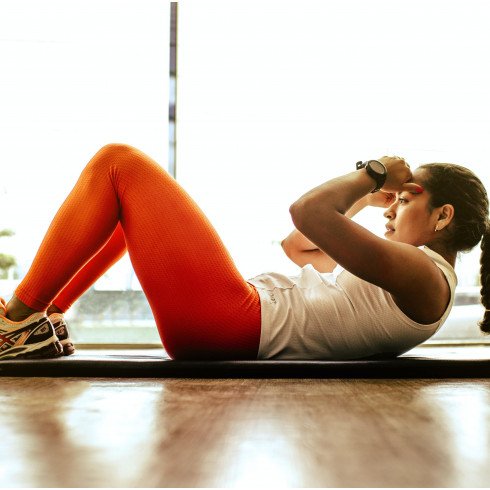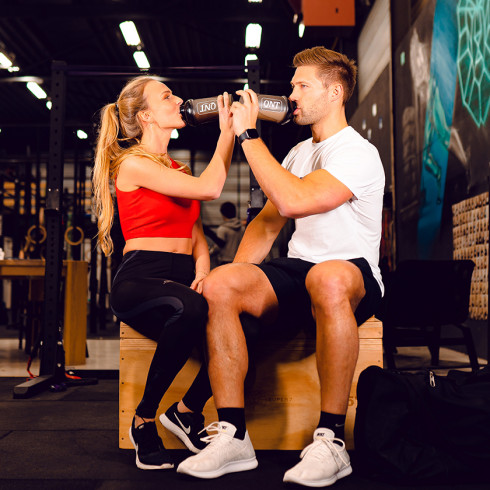Best Exercise for the Back.
The BEST EXERCISE for the back and other muscles !
Anyone who has frequented fitness centers has at some point wondered: What is the best exercise for an effective workout? It's a question that often arises, whether you're a beginner or an experienced practitioner. The desire to maximize efforts, to see rapid and significant results, drives us to seek the holy grail of strength training exercises. But this quest can be confusing, as it often leads to trying out numerous exercises without truly understanding what makes them effective.
Objective: Understanding the Effectiveness of an Exercise.
The goal here is not simply to list exercises considered the best. That would be too easy and not very informative. Instead, it's crucial to understand the criteria that make an exercise effective to better structure your workouts and achieve your goals.
Several factors come into play for an exercise to be effective :
- Muscle Engagement: A good exercise should optimally target the desired muscle group.
- Movement Complexity: Compound exercises engage multiple joints and muscle groups, making the exercise more comprehensive.
- Intensity: The exercise should be sufficiently intense to induce physiological adaptations such as muscle hypertrophy or increased strength.
- Form and Technique: Good technique is crucial to prevent injuries and maximize effectiveness.
- Progression and Progressive Overload: An effective exercise should allow for regular progression to continue stimulating the muscles.
By understanding these criteria, you can choose and perform exercises that best suit your goals, fitness level, and personal preferences. This will allow you to build a training program that is not only effective but also tailored to your specific needs.
Categories of Exercises.
For each muscle group, there are a number of exercises that can be categorized into two main types :
- Compound Exercises (Multi-joint)
- Isolation Exercises
Compound Exercises (Multi-joint Exercises).
Compound exercises, or multi-joint exercises, are movements that involve multiple joints and muscle groups simultaneously. These exercises often work large portions of the body and also engage the cardiovascular system. They are the most effective exercises for building muscle mass or strength.
Advantages of Compound Exercises :
- Work multiple muscles simultaneously: By engaging numerous muscles, they allow for considerable time savings.
- More fatiguing, hence more effective: The high intensity of these exercises stimulates faster muscle growth.
- Engage surrounding smaller muscles: This promotes balanced and comprehensive development of the targeted area.
- Generate greater muscle stress: This increased stress leads to a higher release of anabolic hormones, promoting muscle growth.
- Produce greater release of anabolic hormones: Such as testosterone and growth hormone, crucial for muscle development.
Examples of Compound Exercises :
- Squat: Mainly works the thighs, glutes, hamstrings, and lower back.
- Bench Press: Engages the chest, shoulders, and triceps.
- Incline Bench Press: Focuses on the upper chest.
- Pull-ups: Strengthens the back, biceps, and shoulders.
- Deadlift: Targets the hamstrings, lower back, glutes, and traps.
Compound exercises save time by working multiple muscles in a single movement. They promote balanced development of the body by engaging all muscles, including associated smaller muscles.
Isolation Exercises.
Isolation exercises, on the other hand, are used to target specific muscles. They are particularly useful for balancing muscle development, especially if certain muscles are not developing as quickly as others. Isolation exercises are not the foundation of a program but complement compound exercises to achieve balanced and harmonious muscle development.
Start with your compound exercises first and use isolation exercises as finishing moves. When building a program, make it coherent and relevant to your body and its development—not a program found randomly on the internet that doesn't match your personality.
Squat: The Ultimate Exercise.
If you had to remove all exercises and keep only one, it would surely be the squat! This exercise is often regarded as the king of strength training movements due to its ability to engage and develop a multitude of muscles and bodily functions. Here's why the squat is so powerful and comprehensive :
Muscles Worked by the Squat.
- Quadriceps: Located at the front of the thighs, the squat primarily targets these large muscles, promoting strength and hypertrophy.
- Glutes: The gluteal muscles are heavily activated, aiding in developing a strong and well-shaped rear.
- Hamstrings: Situated at the back of the thighs, these muscles stabilize and control the movement during squats.
- Calves: While not the primary focus, the calves play a role in ankle and foot stabilization during squats.
- Lower Back: The erector spinae muscles are engaged to maintain proper posture and protect the spine.
- Abdominals: Core stability is essential for stabilizing the trunk, strengthening both deep and superficial abdominal muscles.
- Upper Back: Muscles like the trapezius and rhomboids in the upper back are activated to maintain bar position and ensure upright posture.
- Arms and Forearms: While primarily for stabilization, gripping the bar engages the arms and forearms during squats.
Why Squatting is Essential.
- Harmonious Development: Squats engage nearly all major muscle groups, promoting balanced and harmonious muscle development.
- Improved Overall Strength: By involving multiple muscles and joints, squats contribute significantly to overall strength gains.
- Support for Athletic Performance: Squat movements enhance power, explosiveness, and stability, crucial qualities for various sports.
- Increased Metabolism: Engaging numerous muscles, squats elevate energy expenditure and contribute to fat loss.
- Release of Anabolic Hormones: Compound exercises like squats stimulate the release of testosterone and growth hormone, promoting muscle growth and recovery.
How to Execute a Squat Correctly.
To maximize benefits and minimize the risk of injury, proper technique is crucial :
- 1. Positioning: Place your feet shoulder-width apart, toes slightly pointed outward.
- 2. Bar Position: The bar should rest on the top of your traps, not on your neck.
- 3. Controlled Descent: Bend at the hips and knees to lower your body, keeping your back straight and chest up.
- 4. Depth: Descend until your thighs are parallel to the floor or slightly below, depending on your flexibility.
- 5. Explosive Ascent: Push through your heels to return to the standing position, maintaining a stable and upright posture.
Many confuse the quarter squat, half squat, and full squat. The quarter squat is mainly used in powerlifting to increase explosiveness, as is the half squat. The full squat is more effective in bodybuilding and powerlifting, but not everyone may have the adequate morphology to achieve it. Consult with a specialist to guide you in your approach.
By following these tips, you can effectively and harmoniously achieve your fitness goals. The squat is a versatile and powerful exercise, essential for any serious training program.
Exercises by Muscle Region.
To effectively work each muscle group, it's important to know the most efficient exercises for each muscle group.
Chest
Best Exercises:
- Bench Press: Targets the chest, shoulders, and triceps. This exercise involves lying on a bench and pushing a barbell or dumbbells upwards from the chest. It's excellent for building chest strength and size. It's a popular exercise, but be cautious not to push through any pain to avoid injuring the rotator cuff.
- Incline Bench Press: Focuses on the upper chest. By inclining the bench at approximately 30-45 degrees, you engage the upper part of the chest more, helping to develop a balanced torso. Avoid inclining the bench too much to target the shoulders instead of the chest. It can be challenging to focus solely on the upper chest; in this case, the stronger muscle, whether shoulders or chest, may dominate. Start this exercise with light weights and only increase them when you can effectively concentrate on the muscle you're working.
- Dumbbell Flyes: An isolation exercise that specifically targets the chest. Lying on a bench, you spread your arms with dumbbells and then bring them back together, effectively stretching and contracting the chest muscles.
Back
Best Exercises:
- Pull-ups: Strengthens the lats, biceps, and shoulders. Hanging from a fixed bar, you pull your body upwards until your chin passes the bar. This exercise develops back width and grip strength. Varying your grip can provide variation and target different parts of the back.
- Barbell Row: Targets the lats, traps, and biceps. By leaning your torso forward and pulling a barbell towards your abdomen, you intensely engage the muscles of the back.
- Deadlift: A foundational exercise that targets the lower back, hamstrings, and glutes. By lifting a barbell from the floor to hip height, you work a large portion of the posterior chain and develop impressive overall strength. The Romanian deadlift, with legs straight, focuses more on the hamstrings. Be sure to maintain proper form to avoid lower back injuries—keep your back flat! If you bend your legs, the emphasis shifts more towards the glutes, while the Olympic deadlift, used in powerlifting, primarily targets the legs.
Shoulders
Best Exercises:
- Military Press: Targets the front deltoids and triceps. By pressing a barbell or dumbbells overhead from a standing or seated position, you strengthen the shoulders and arms.
- Lateral Raises: An isolation exercise for the lateral deltoids. By raising dumbbells to shoulder height to the sides, you specifically target the sides of the shoulders for broader development. Be careful not to compensate with your back or use elbow joint rotations to initiate the movement. To be effective, this movement should be executed strictly without swinging the weights.
- Rear Delt Flyes: Targets the rear deltoids. By leaning forward and raising dumbbells to the sides, you engage the rear shoulders, crucial for balanced posture and complete shoulder development.
Arms
Best Exercises:
- Bicep Curl: An isolation exercise for the biceps. By flexing the arms to lift dumbbells or a barbell, you focus the effort on the biceps, promoting muscle growth and definition. Note that with dumbbells, if you rotate your forearm into supination during the exercise, you will engage more of the biceps than the brachialis.
- Tricep Extension: An isolation exercise for the triceps. By extending the arms overhead with dumbbells or a barbell, you target the triceps to improve arm strength and size. This exercise can be performed at various inclinations to vary the sensation on the triceps.
- Dips: A compound exercise that targets the triceps, chest, and shoulders. By lowering and raising your body in suspension on parallel bars, you work multiple muscles simultaneously, enhancing strength and endurance. To focus more on the triceps than the chest, keep your body upright and elbows close. To target the chest more, lean forward and widen the elbows.
Legs
Best Exercises:
- Squat: Targets the thighs, glutes, hamstrings, and lower back. By bending your legs to lower your hips and then extending them to stand up, you work all leg and lower body muscles.
- Leg Press: Primarily targets the thighs and glutes. By pushing a platform with your feet from a seated position, you can safely lift heavy weights, promoting leg development.
- Lunges: A fundamental exercise that works the thighs, glutes, and calves. By stepping one leg forward and lowering your body until the rear knee almost touches the ground, you intensely engage leg muscles in a balanced manner.
Abs
Best Exercises:
- Crunches: Target the upper abdominals. By contracting your abs to lift your shoulders off the floor, you isolate and strengthen the upper part of the abdominal muscles.
- Plank: Engages the entire core and enhances stability. Maintain a straight and rigid position on your forearms.
There are many exercises for abs, and they can also be worked on in group classes, which can sometimes provide additional motivation.
Start with your compound exercises first and use isolation exercises as finishing touches. When building a program, make it coherent and relevant to your body and its development—not a program found randomly on the internet that doesn't match your personality.
Coach's Tips.
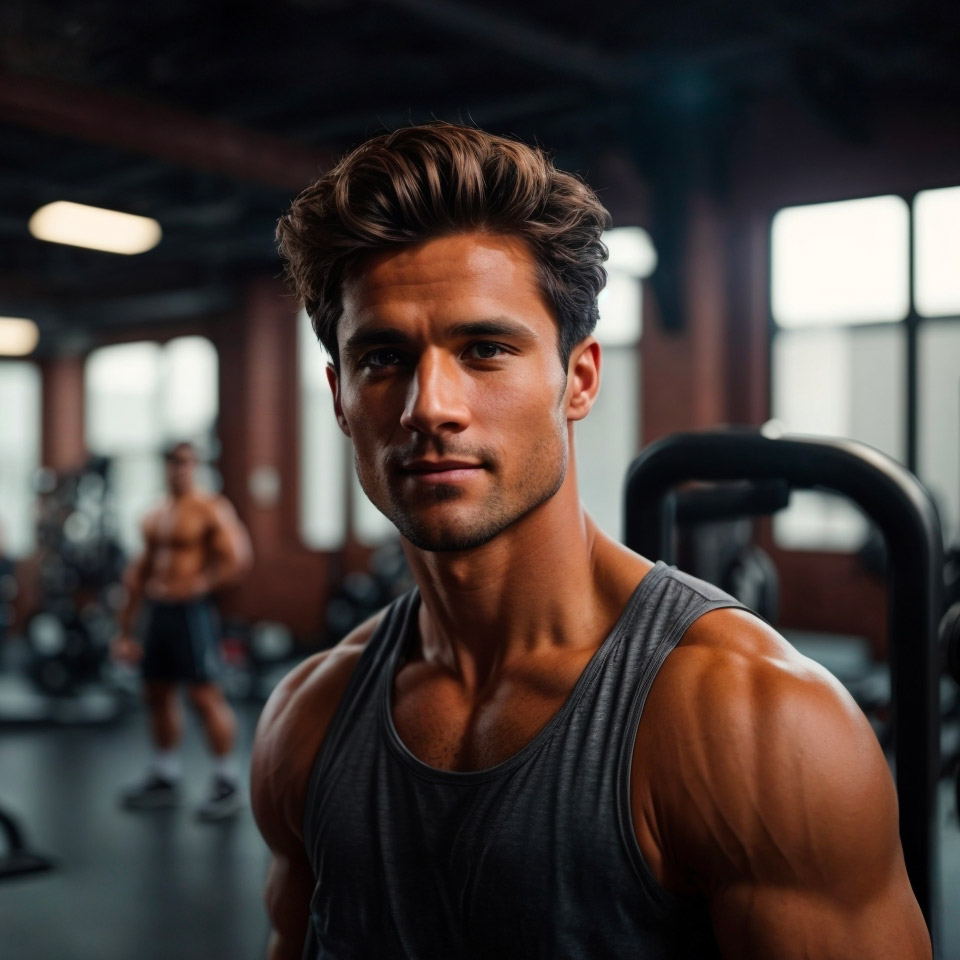
- It's important to learn exercises correctly. While there are many tutorials on the internet, not all of them are accurate. Many beginners in fitness feel compelled to share their limited experience online. It's better to learn from someone experienced who can explain the 'why' and 'how' to you.
- The three most important exercises to include in every beginner's workout or to try mastering as soon as possible are: the full squat, of course, deadlifts, and pull-ups on a bar. Pull-ups are not always easy for beginners; if you can't do them, aim to finish each workout with a set of pull-ups to quickly progress to being able to do a few repetitions.
- Not everyone can perform a full squat, so many athletes don't squat all the way down and lift heavy weights. If you can't do a full squat, that's understandable, but never sacrifice exercise quality just to boost your ego. It won't help you progress. Even if you can do a quarter squat with heavy weight, it's uncertain if muscle development will follow.
Related posts
-
 Summer holidays: How to limit the damage?
Posted in: Our tips24/06/2021On holiday, we often tend to let ourselves go. Unless you're a hardcore sportsman, you tend to abandon your trainers...Read more
Summer holidays: How to limit the damage?
Posted in: Our tips24/06/2021On holiday, we often tend to let ourselves go. Unless you're a hardcore sportsman, you tend to abandon your trainers...Read more -
 Which fat burner to choose?
Posted in: Our tips26/05/2021To lose weight and burn fat, there is no secret: you have to do sport and take care of your diet. However, it is...Read more
Which fat burner to choose?
Posted in: Our tips26/05/2021To lose weight and burn fat, there is no secret: you have to do sport and take care of your diet. However, it is...Read more -
 Summer body edition for men: How to prepare your body?
Posted in: Our tips11/05/2021Gentlemen ? The return of the sun and its warm rays are almost here! The degrees are slowly but surely rising, but...Read more
Summer body edition for men: How to prepare your body?
Posted in: Our tips11/05/2021Gentlemen ? The return of the sun and its warm rays are almost here! The degrees are slowly but surely rising, but...Read more -
 9 good reasons to do sport.
Posted in: Our tips22/04/2021Sometimes the urge to exercise is not always there. And although we always tell ourselves that this year will finally...Read more
9 good reasons to do sport.
Posted in: Our tips22/04/2021Sometimes the urge to exercise is not always there. And although we always tell ourselves that this year will finally...Read more -
 Discover how to take care of your faithful companion: your shaker!
Posted in: Our tips07/04/2021In your bag, in your hand, in your sink, it is everywhere! The shaker is an essential element of any good training....Read more
Discover how to take care of your faithful companion: your shaker!
Posted in: Our tips07/04/2021In your bag, in your hand, in your sink, it is everywhere! The shaker is an essential element of any good training....Read more
Blog categories
Popular posts
-
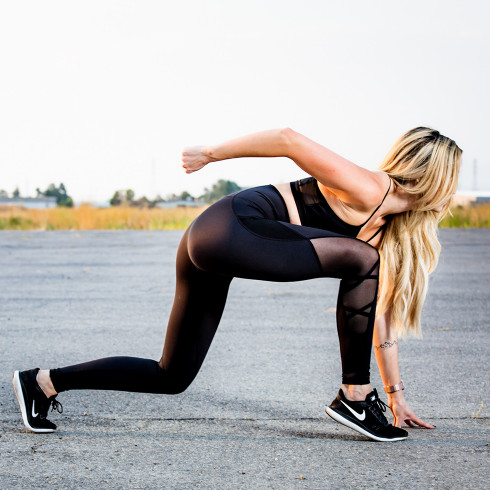 Looking thinner but at a heavier weight? Is that possible?04/10/2021Posted in: Our tipsAdvertising has shaped our thinking! We have been forced for years to believe that losing weight is the key to having...Read more
Looking thinner but at a heavier weight? Is that possible?04/10/2021Posted in: Our tipsAdvertising has shaped our thinking! We have been forced for years to believe that losing weight is the key to having...Read more -
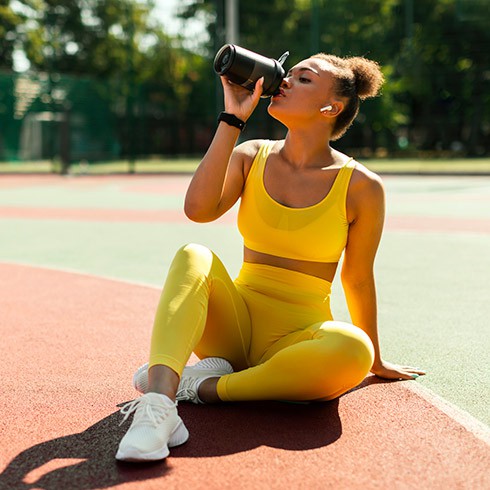 Proteins for weight loss !29/12/2023Posted in: Our tipsDive into the fascinating world of proteins and their key role in weight loss. Discover how to choose the best...Read more
Proteins for weight loss !29/12/2023Posted in: Our tipsDive into the fascinating world of proteins and their key role in weight loss. Discover how to choose the best...Read more -
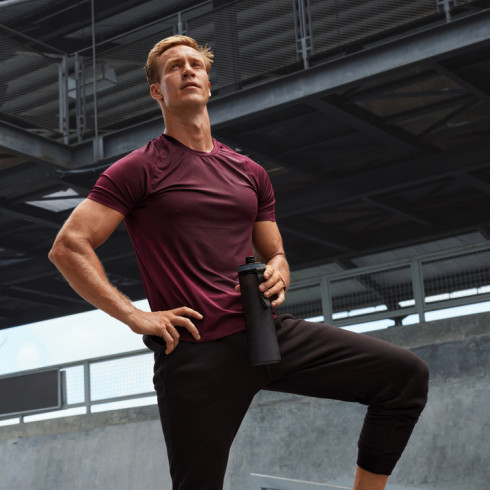 Which foods boost testosterone levels ?07/05/2021Posted in: Food supplementsTestosterone, often associated with virility, has much more to offer than you might think. It plays a crucial role in...Read more
Which foods boost testosterone levels ?07/05/2021Posted in: Food supplementsTestosterone, often associated with virility, has much more to offer than you might think. It plays a crucial role in...Read more -
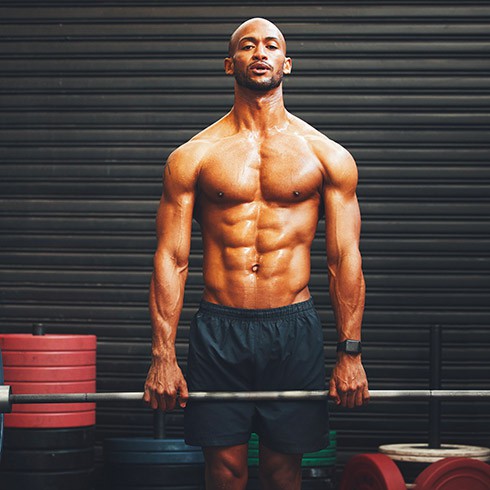 10 BENEFITS OF GLUTAMINE.02/01/2024Posted in: Our tipsDiscover the power of L-glutamine, an underrated superhero in the world of amino acids! Essential for revitalizing...Read more
10 BENEFITS OF GLUTAMINE.02/01/2024Posted in: Our tipsDiscover the power of L-glutamine, an underrated superhero in the world of amino acids! Essential for revitalizing...Read more -
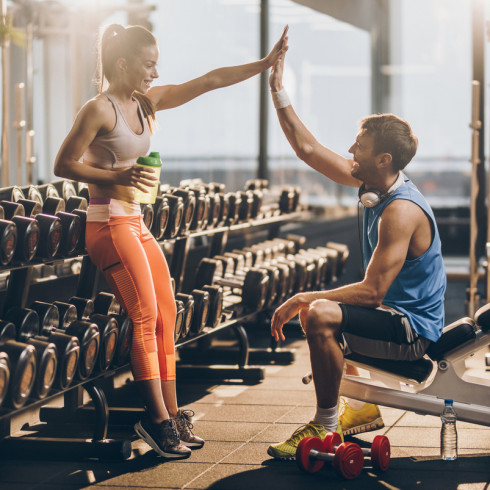 Is there a link between sex and sport?14/11/2019Posted in: LifestyleMany have already asked questions about sex and sport. Most of the time, people want to be reassured by the many...Read more
Is there a link between sex and sport?14/11/2019Posted in: LifestyleMany have already asked questions about sex and sport. Most of the time, people want to be reassured by the many...Read more
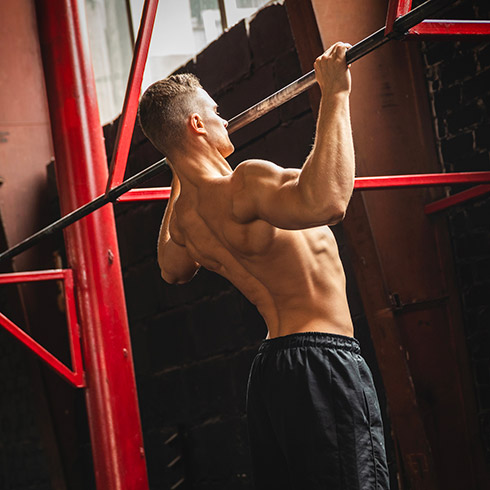
.jpg)
